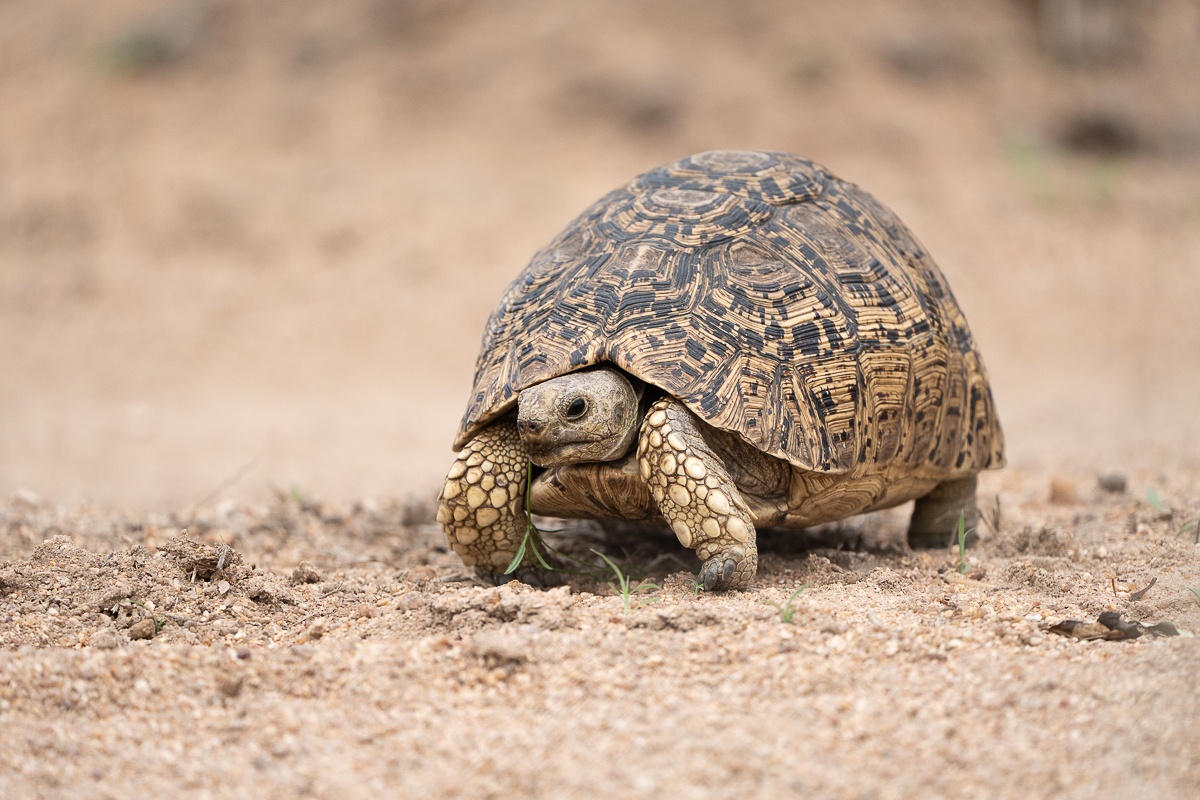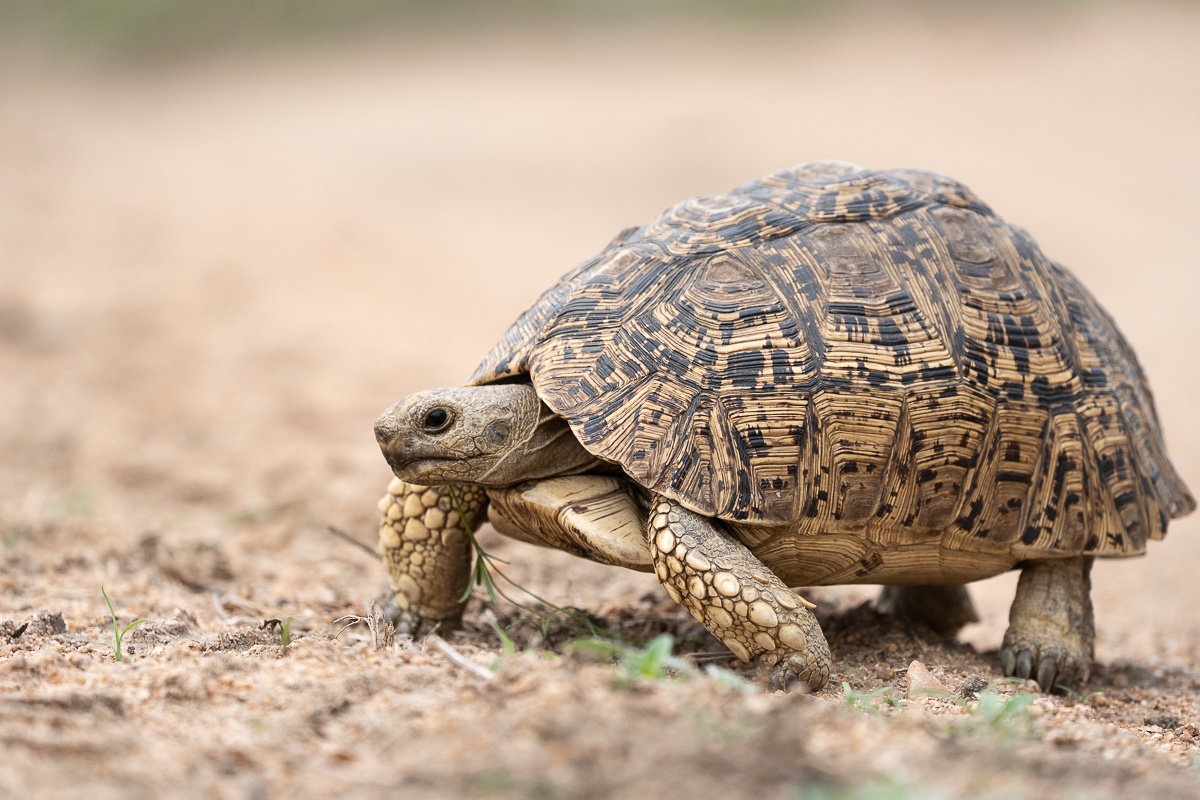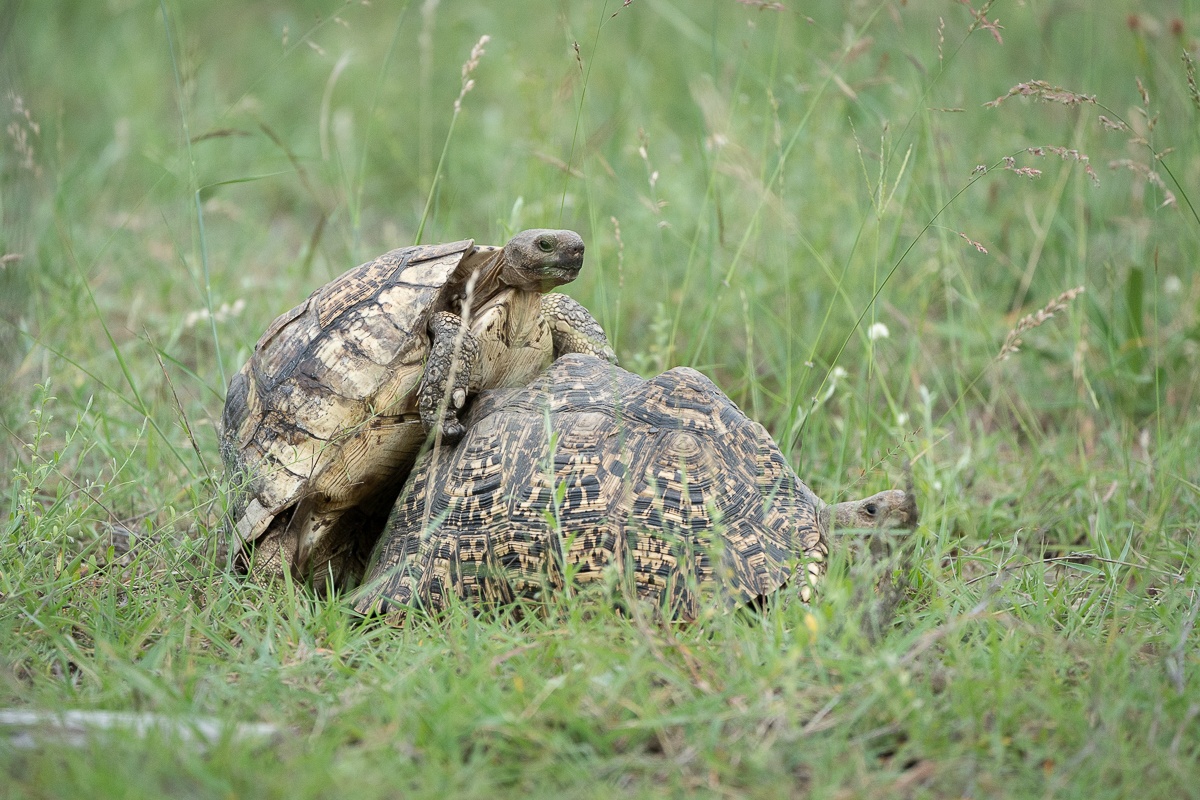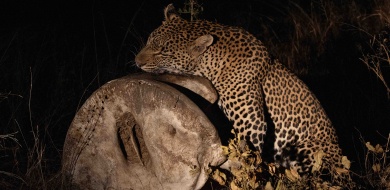Leopard Tortoise Mating
on Jan 16, 2024The African bush always finds a way to surprise you with something unique, even in the little details that we don’t see every day. We often get asked the question if we don’t get bored or used to all the things we see daily, but the truth is, Mother Nature always finds a way to surprise you with something you haven’t seen before. Whether it is your first time on safari, or your millionth time out and about, and sometimes you just have to be at the right place at the right time…

This was the case while we were driving around looking for the last few big animals that our guests wanted to tick off their list. We often forget about the smaller animals around us that we normally don’t see while driving, but luckily for us, what looked like two moving rocks caught our attention, enough for us to wonder what is happening. Two Leopard tortoises were making their way through an open area, and moments later the male, with effort, mounted the female and they started mating. A sight that I have never seen before!

Leopard tortoises have quite a unique mating process and only attain sexual maturity between 12-15 years. Their breeding season is from September to April, and in this time the males combat one another by ramming, butting and sometimes overturning their competitors. With their direct approach to courtship, they will directly approach a female that he has been trailing for some distance and butting her into submission. Only when the female accepts, the mounting will take place. The male will grip the female’s carapace by using his forelimbs and his concaved plastron helps him to stay in position. This is normally a noisy affair, with grunts, groans, and wheezes from the males.
After they have successfully mated, the female will go out and search for a sunny, well-drained site and start digging a flask-shaped pit of about 25cm deep. If the soil is too hard, she will urinate to soften the soil. Depending on the size of the female, up to 24 eggs can be laid inside this hole. After laying the eggs, she refills the hole, and firmly pats it down with her hind feet, and stamps down the soil by lifting and dropping her shell on the spot. Females can lay several clutches, and incubation takes about 8 – 15 months (depending on the temperature) which is one of the longest incubation periods of any tortoise. The gender of the hatchlings will depend on the temperature at which the eggs are incubated with higher temperatures hatching female tortoises and lower temperatures hatching male tortoises.
When ready to hatch, often after rain, the baby Leopard tortoise will use an egg tooth to break the shell of the egg and dig their way out of the ground. The new hatchlings are now entirely on their own with no parental guidance at all. According to statistics only one in 100 hatchlings will survive to adulthood. They are exposed to many enemies throughout their lifetime, and predators such as rock monitors, storks, crows and small carnivores will prey on them. They will immediately start to feed on a variety of plants, but they prefer to feed on succulents because of the higher water content in them.
The mating rituals of Leopard tortoises are a captivating and a vital aspect of their life cycle. From their elaborate courtship dances to the patient copulation, every step plays a role in the survival of this remarkable species.

Blog by Daniel Greyvenstein (Bush Lodge Ranger)







